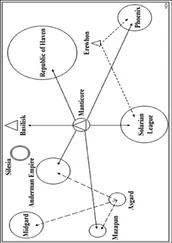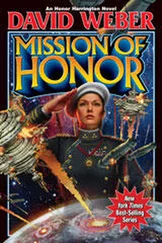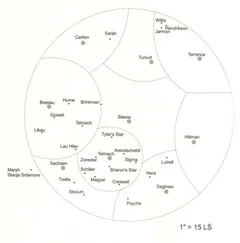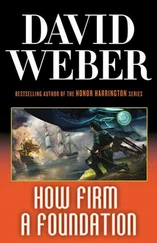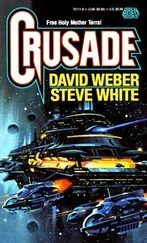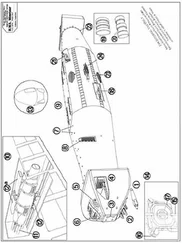David Weber - Old Soldiers
Здесь есть возможность читать онлайн «David Weber - Old Soldiers» весь текст электронной книги совершенно бесплатно (целиком полную версию без сокращений). В некоторых случаях можно слушать аудио, скачать через торрент в формате fb2 и присутствует краткое содержание. ISBN: , Издательство: Baen Publishing Enterprises, Жанр: Фантастика и фэнтези, на английском языке. Описание произведения, (предисловие) а так же отзывы посетителей доступны на портале библиотеки ЛибКат.
- Название:Old Soldiers
- Автор:
- Издательство:Baen Publishing Enterprises
- Жанр:
- Год:неизвестен
- ISBN:1-4165-0898-8
- Рейтинг книги:4 / 5. Голосов: 1
-
Избранное:Добавить в избранное
- Отзывы:
-
Ваша оценка:
- 80
- 1
- 2
- 3
- 4
- 5
Old Soldiers: краткое содержание, описание и аннотация
Предлагаем к чтению аннотацию, описание, краткое содержание или предисловие (зависит от того, что написал сам автор книги «Old Soldiers»). Если вы не нашли необходимую информацию о книге — напишите в комментариях, мы постараемся отыскать её.
Old Soldiers — читать онлайн бесплатно полную книгу (весь текст) целиком
Ниже представлен текст книги, разбитый по страницам. Система сохранения места последней прочитанной страницы, позволяет с удобством читать онлайн бесплатно книгу «Old Soldiers», без необходимости каждый раз заново искать на чём Вы остановились. Поставьте закладку, и сможете в любой момент перейти на страницу, на которой закончили чтение.
Интервал:
Закладка:
The mounts were used primarily as scouts, using their look-down sensors—which were quite competent, though not up to Concordiat standards—to sweep the rest of the brigade's line of advance.
Their normal weapons were useless against any armored vehicle heavier than an infantry transport, and, despite their speed and agility, they were easy prey for antimissile and air defense systems if they exposed themselves. They could be equipped with fusion weapons, which meant it was remotely possible the Enemy might dispatch them on a strike against Landing, but the probability of their being able to penetrate Landing's fixed defenses was less than two percent.
In addition to the heavy mounts, the regiment had its own attached recon company, made up of one hundred one-man mounts which were tiny, fragile, unarmed, capable of dash speeds at surprisingly high Mach numbers, and extremely hard to detect. They were, in fact, considerably stealthier than the Empire's unmanned recon platforms. That, coupled with the fact that the relatively limited capability of Melconian cybernetics made it extremely useful to have a trained organic intelligence assessing the situation first hand, explained why they were so highly valued by Puppy commanders.
The infantry regiment was composed of three battalions, each about twice the size of a Concordiat militia battalion, mounted in ground-effect armored personnel carriers. The APCs were fast, but fragile compared to Concordiat equipment, and they were armed with relatively low-velocity, indirect fire weapons rather than the light, direct-fire Hellbore armament the Concordiat's more heavily armored APCs favored. Its organic support weapons were also very light compared to the Concordiat standard, but they were vehicle-mounted, intended to fire on the move, which made them elusive targets. In addition to its combat and support elements, the regiment included a reconnaissance company equipped with a hundred one-man grav scooters. The scooters were unarmed and unarmored, but they were very fast, very maneuverable, and equipped with excellent stealth capabilities.
An Imperial Melconian infantry regiment was an opponent to respect, but it would have posed little threat to the colony's militia alone if not for the armored regiment. According to the intelligence reports stored in her/their memory, the Enemy had recently begun reorganizing some of his armored regiments, emphasizing the direct-fire role even more heavily, but this one was organized on the older, original basis.
It consisted of two armored battalions, each of three "fists"—three Surturs, each with its assigned pair of supporting Fenrises—for a total of six heavy and twelve medium mechs between both battalions, plus a recon company of twelve three-man Heimdalls.
One battalion was equipped with Surtur Alphas, 18,000-ton vehicles which were actually twenty percent more massive than a Mark XXVIII Bolo, with a main battery of six 82-centimeter Hellbores (or, rather, the less efficient Melconian version of that weapon) in two triple, echeloned turrets. That was an extraordinarily heavy battery, even for a vehicle the size of a Surtur, and their designers had paid for it by mounting much less capable secondary armaments. The Surtur Alphas, for example, mounted a secondary battery of fourteen heavy railguns, designed to fire both super-dense penetrators and a variety of special-purpose rounds, rather than the energy-weapon secondary armaments which had been a feature of Bolo design ever since the Mark VIII. It gave the mech an awesome punch against infantry, APCs, and dug-in ground targets, but it was effectively useless against a Bolo's antikinetic battle screen.
Both Surtur types were lavishly equipped with antimissile defenses of their own. Indeed, they had been upgraded significantly in the face of the Concordiat missile threat since the start of the war.
The Fenrises assigned to each battalion were identical: nine thousand tons, with a single
38-centimeter Hellbore-equivalent main weapon, and eight scaled-down railguns for secondary armament. That was a light direct-fire armament, but they were proportionately as well equipped for antimissile and air-defense, and they used much of their tonnage for a support armament of very short-ranged, extremely fast missiles. Tactically, the Fenris was intended to probe ahead as the fist advanced, and then to fall back and lay down saturation fire in support of the Surturs as the heavies closed. Once close combat was joined, the Fenris' job was to cover the heavies' flanks while simultaneously maneuvering around their opponents' flanks and rear, as well.
The Heimdalls were even lighter than the Fenrises, barely three thousand tons, and equipped only with light antimissile defenses and a single main battery turret mounting a pair of the lighter railguns. They were, however, ground-effect vehicles, not tracked like their heavier consorts. That made them extremely fast—faster even than a Bolo—and allowed them to negotiate terrain very few other armored units could cross. They were equipped with the best sensor systems the Melconian Empire had, and they were relatively stealthy, as well, though not nearly so hard to spot as the infantry's recon scooters.
Leaving the Heimdalls out of the equation, since their combat value against a Bolo was negligible, she/they were outnumbered by 18-to-1, although the tonnage differential wasn't quite that bad—only
14.4-to-1—thanks to the Fenrises' smaller size. Those were daunting odds, and she/they were going to have to fight smart even by Bolo standards. In a stand-up slugging match against the Surturs' combined thirty-six Hellbores, she/they would be quickly destroyed, despite her/their far superior battle screen and thicker and tougher armor. But for all their massive firepower, the Enemy mechs suffered from one huge disadvantage; they were manned units whose AI support was extremely limited. They were slow compared to any Bolo ... and old as Lazarus was, his psychotronics had been heavily refitted when he was reactivated. He was more lightly armed than later-mark Bolos, but he thought—and reacted—just as quickly as his younger brothers and sisters.
That was going to have to be enough, her/their Maneka half thought in the small corner of her mind which remained outside the link. That, and the surveys she/they had carried out and the carefully planted sensor net which was letting her/them observe the Enemy directly without expending recon drones just looking for him. And, she/they devoutly hoped, lulling the Puppies into a sense of false security when none of those airborne sensor platforms "found" them. She/they weren't about to rely on that, but it would be nice if the Puppies hadn't twigged to the sensor net's presence.
Thoughts of what the Melconians might or might not know turned her/their attention to the grounded transport. That transport had to be neutralized. At the moment, Thermopylae's assault pod gave her/them the mobility advantage. But sooner or later, she/they were going to have to engage the Enemy.
Once they undocked from the pod, redocking would be out of the question. It would take too long, and she/they would be unable to maneuver, too vulnerable to enemy fire, to spend the time to board it once more. For that matter, without her/them mounted on the pod, it would have neither the active defenses nor the electronic warfare capability to penetrate the enemy's combat envelope to reach her/them, in the first place. No. Once she/they detached from the pod, she/they would be unable to use it further until the battle was decided, one way or the other. And if the Melconian combat mechs managed to pin her/them down while a half-dozen Fenrises fell back to the transport and used its mobility to launch a frontal assault on Landing while she/they were too far away to intervene, it would be disastrous. And, unfortunately, the transport had not been obliging enough to park itself in one of the areas covered by her/their previously planted remotes. She/they knew approximately where it had to be, but
Читать дальшеИнтервал:
Закладка:
Похожие книги на «Old Soldiers»
Представляем Вашему вниманию похожие книги на «Old Soldiers» списком для выбора. Мы отобрали схожую по названию и смыслу литературу в надежде предоставить читателям больше вариантов отыскать новые, интересные, ещё непрочитанные произведения.
Обсуждение, отзывы о книге «Old Soldiers» и просто собственные мнения читателей. Оставьте ваши комментарии, напишите, что Вы думаете о произведении, его смысле или главных героях. Укажите что конкретно понравилось, а что нет, и почему Вы так считаете.


